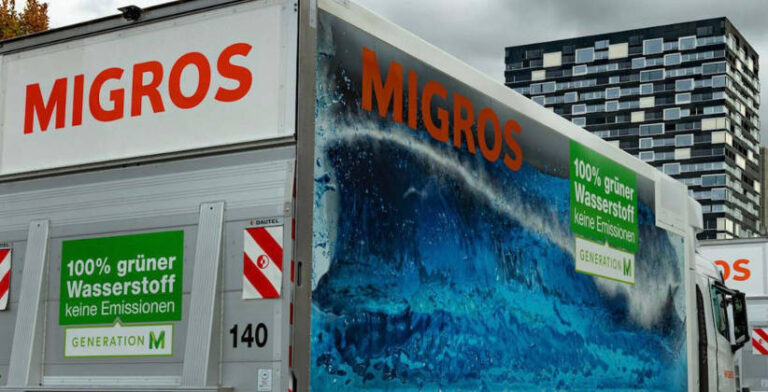I sat down for a talk with HERE Technologies General Manager of Australia and New Zealand, Dan Antonello, and we rambled about autonomous driving, sustainability, logistics, supply chains and how his company’s location and mapping services intersects all those areas.
My ears really pricked up when we got onto the subject of sustainability and a tool that HERE has developed with Switzerland’s biggest retailer Migros to measure real tailpipe CO2 emissions in its fleet of 1,000 trucks.
I’ve heard about online estimators before, but not of a tool that measures actual emissions, so I thought this is the story I want to share with our fleet readers. We know that one of the top priorities for fleets including those in Australia is to somehow account for and reduce their environmental impact. But, just as a European study earlier this year shows, many fleet managers don’t quite know how to go about it.
Migros has some 2,000 stores, mostly supermarkets, and had set itself environmental goals. “Sustainability has always played a major role for Migros,” the cooperative’s Director of Traffic Rainer Deutschmann said in a press release. He said their goal was to reduce its carbon emissions in road transport by 70 cent by 2030, and that this new tool will both help it do so, and also to “consolidate our position as one of the most sustainable retailers in the world.”
The CO2 insights tool — going under the name M Opex Tower — predicts the amount of CO2 produced for any given commercial truck — be it gasoline, electric, or diesel powered — on any given route. Knowing how a certain vehicle operates on a particular road, with its idiosyncratic grades, and curves, and surface is crucial. In these calculations not all miles are equal.
Curves, grades and elevation have a big impact on the amount of emissions that a truck is putting out there, said Antonello.
“So with our data around the actual route and the elevation they took, with what they were capturing through the exhaust pipes, they were able to determine actual buildup of CO2 emissions.”
Armed with that knowledge Migros then took out 50 diesel trucks and replaced them with alternative power trains, including electric, bio diesel and hydrogen.
“With this switch Migros reached 10 percent of net savings in CO2 within one year, which is way ahead of their goal,” said Antonello. This suggests Migros fleet will reach its 70 percent goal in seven years rather than the nine years originally targeted.
“And that’s really impressive when you think about the volume that they have, and the size of their fleet, the footprint that they would emit,” said Antonello.
I recalled Antonello speaking at the National Road and Traffic Expo in Sydney a month earlier where he said: “Sustainability isn’t a trend anymore. It’s a driving factor for businesses and now government.” And, he added, “Consumers are now actually demanding it.”
Antonello said HERE Technologies is presently working with a New Zealand transport solutions group Abley to determine emissions produced by employees from their various modes of getting to the workplace.
Typically, organisations are focused on emissions from the workplace: fleets and buildings. This program is all about tracking commutes to the office as people come in from all areas of the city.
“We can then put programs in place to actually reduce the carbon footprint,” said Antonello. “Recording is really important.”
Increasingly stringent emissions reduction requirements are being put in place. Some overseas jurisdictions have reporting requirements for emissions from various scopes — 1,2 and 3 referring to the source of the emission, whether they are from an organisation’s owned assets, from the purchased electricity or power it consumes, or other indirect emissions in the value or supply chain.
“It’s no longer good enough to have an estimate you need to have accurate emission footprint,” said Antonello.






